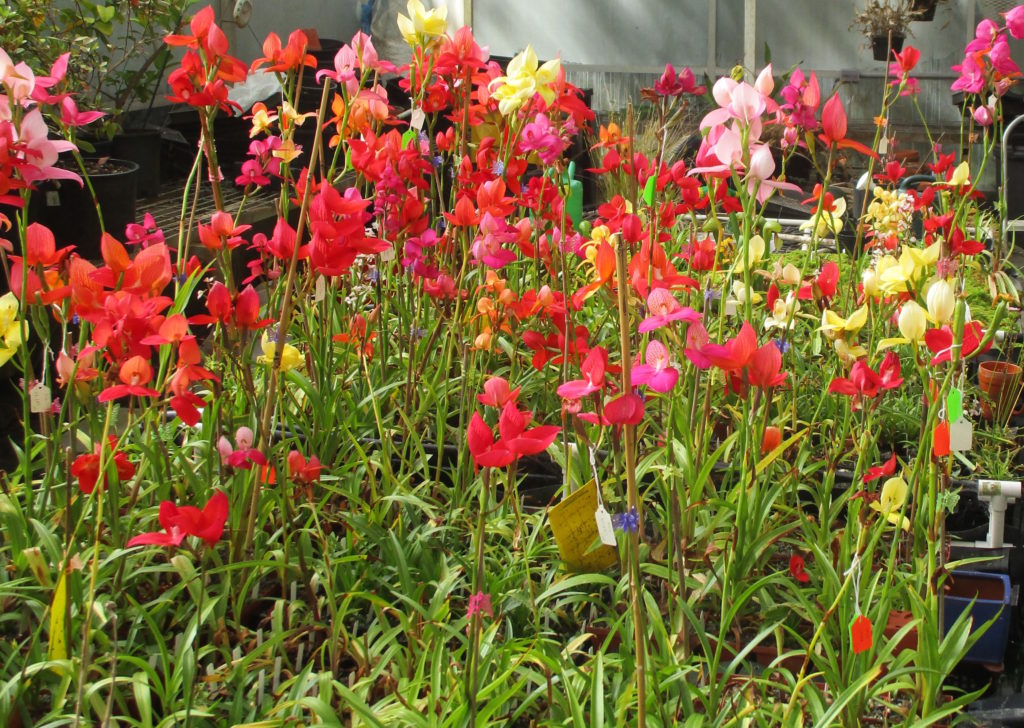
By QUINTON SMITH/YachatsNews.com
Wally Orchard admits his hobby – if you can call it that — is a little out of hand.
There is the timely gathering of tiny seeds, the pollenating, the work inside his small laboratory, the careful cultivating of plants, and weekly trips to a Florence greenhouse where he tends to hundreds of mature orchids.
But when he sees his special orchid – a Disa with roots in his native South Africa — the three years of work it took to take it from seed to flower is all worth it.
“It’s a challenge,” the 74-year-old Yachats resident says. “It’s not trivial growing them. They are a beautiful flower … and there is a challenge in growing a more beautiful flower.”
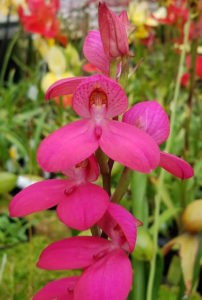
Orchard recently had a special orchid – a Disa hybrid that he created from two other Disa hybrids – registered with the Royal Horticulture Society at the Kew Gardens. It’s called Disa Amanda, in honor of Amanda De-Cuys, a blind Native American who in 1864 was forced by U.S. government troops to leave her husband and daughter and walk from Coos Bay to a military camp in Yachats.
“I’m not really an orchid person,” he says. “I grow these (Disas) and nothing else. And, it keeps a connection to South Africa.”
Orchard grew up in South Africa, coming to the United States with his wife, Christine, in 1992. He taught college chemistry near Olympia, Wash. while she worked for the state.
The climate there was perfect for raising the tempermental Disa orchid. After retirement they came Yachats in 2007 with the plan to partner with another man to raise orchids commercially in a greenhouse north of town. That plan fell apart, but they stayed because the climate here – wet and moderate — was also conducive to Dias.
“Orchids need good water. My Disas need great water,” Orchard explains, resulting in a rainwater collection system in Yachats and a special watering system in Florence.
Most of Orchard’s Disas orchids are red or orange with large blossoms. He has a few, rare yellow orchids “and I’m probably the only one in the U.S. growing them.”
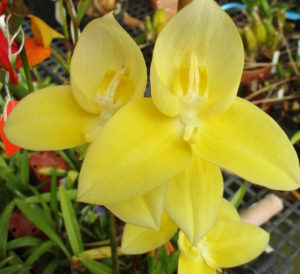
“The orchids I grow are pretty unusual,” he said. “It’s really for my own satisfaction – to grow a better flower.”
Orchard does more than grow orchids. He’s also busy as one of the organizers of the Yachats Trails Committee and president of the Quiet Water Homeowners Association. Christine Orchard is on the Yachats Planning Commission.
Question: How did you get interested in this unusual hobby?
Answer: My parents retired to a town on the South African coast, close to Cape Town. This area is home to many interesting Disas, and my father set up a shade house where he grew them very successfully. I began photographing some of his better plants and soon decided I would like to grow them myself. We moved to Olympia, Wash. in 1994, where conditions for growing Disas are perfect, so I started growing them seriously.
Q: Explain the South African origins of this orchid and what makes it unusual and difficult to grow.
A: The southwestern corner of Africa is home to the Cape Floral Kingdom, an area of exceptional plant diversity. Among these plants are Disas and other terrestrial orchids. Only a handful of Disa species are commonly cultivated. In nature, these grow along stream banks, on waterfalls, and in marshy areas. They need to be constantly moist. To successfully cultivate Disas, one needs special conditions: a plentiful supply of good quality water (most city water supplies will not do); cool temperatures and moderate humidity; and particular growing media (potting soil and most orchid growing media won’t work). Here on the Oregon coast we have plenty of good water (think “rain”) and a suitable climate, so it is a great place to grow Disas.
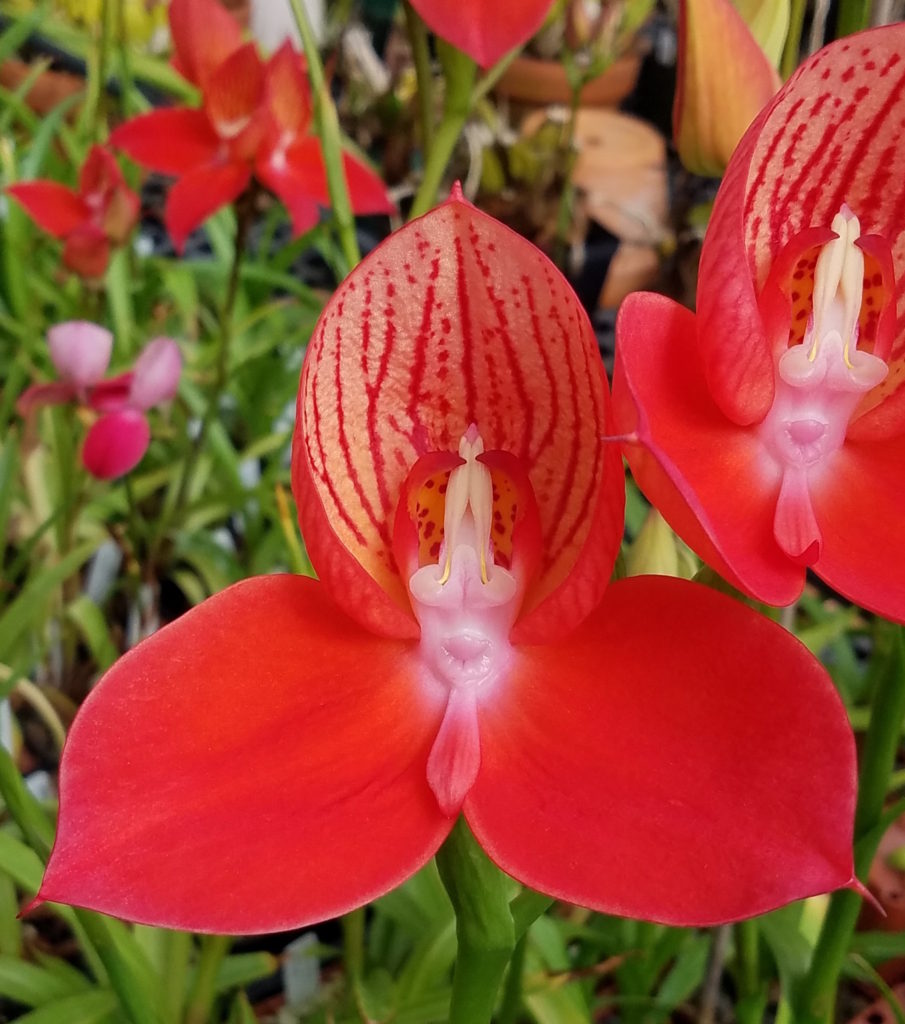
Q: What should the “ideal” Disas look like? What are you trying to do when you create a new hybrid?
A: Orchid judges decide what the ideal shape of an orchid flower should be. This is rather arbitrary, just like the judging other living things like dogs and cats, for example. In the case of Disas, the judges have decreed that the three biggest parts of the flower (the sepals) should point to the corners of an equilateral triangle. They should be equal in size, not too narrow, relatively flat, and the three of them should have an open look about them (not cupped like a tulip). The flowers should be big and numerous (when measured against other Disas of the same type), their color and markings should be attractive (again, subjective) and their arrangement should be elegant (not too crowded, for example).
The Disa Amanda that I bred does not have very big flowers, but it does have wonderful color and the flowers are beautifully arranged along the stem, creating a nice, elegant effect.
When creating a new hybrid, I always look for parents with superior qualities. One line of breeding that I have been following is to try and create brighter, saturated colors. In particular, I would like to get a big flower that is a pure, bright yellow. Going in the opposite direction, nobody has yet created a big, shapely pure white Disa flower. That is something I have been working on without success. I have also been focusing on producing intense red flowers, something that most people find attractive.
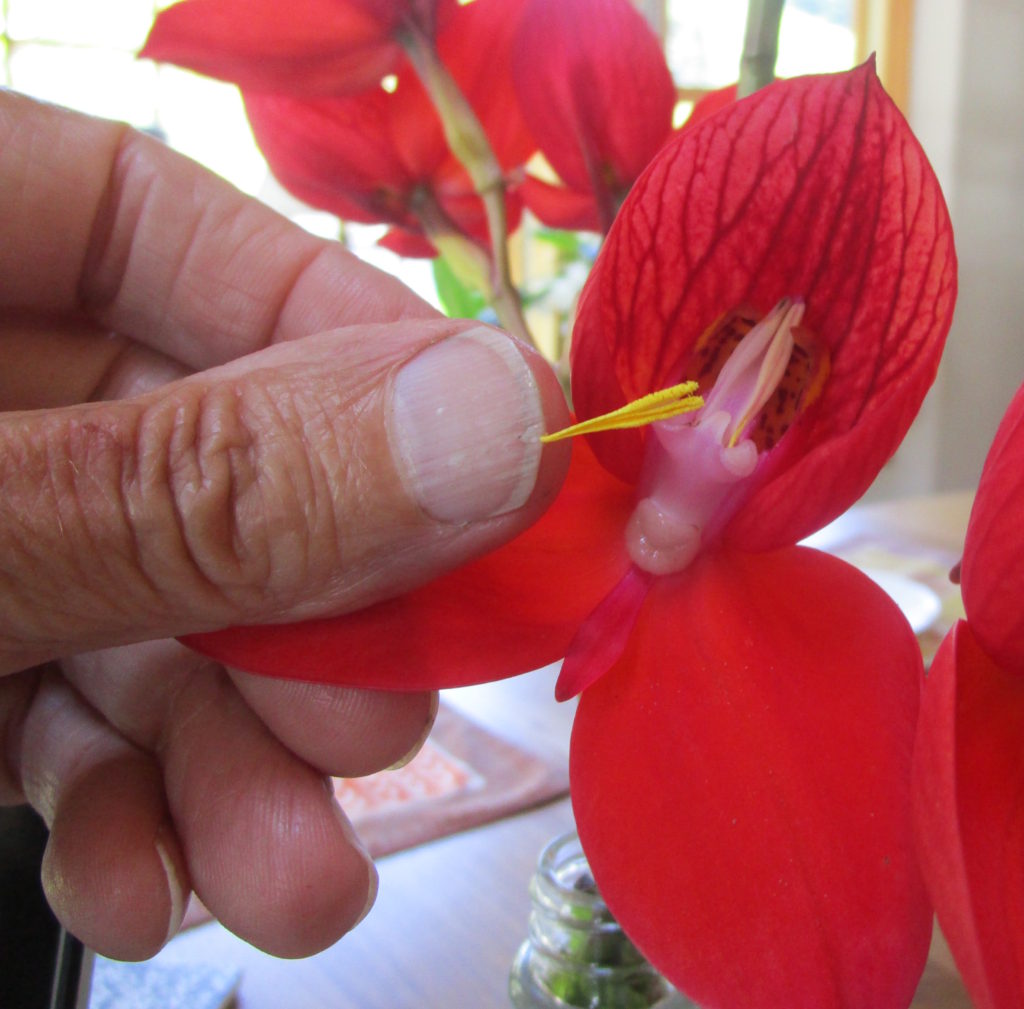
Q: When do you start pollinating and how do you do it?
A: The main flowering season for my Disas is from May to July. To create a hybrid like D Amanda, I collect pollen from one flower and transfer it to the stigma of a different flower. If the pollination is successful, the pollinated flower will close up and a seed pod will develop and ripen over a period of about seven weeks
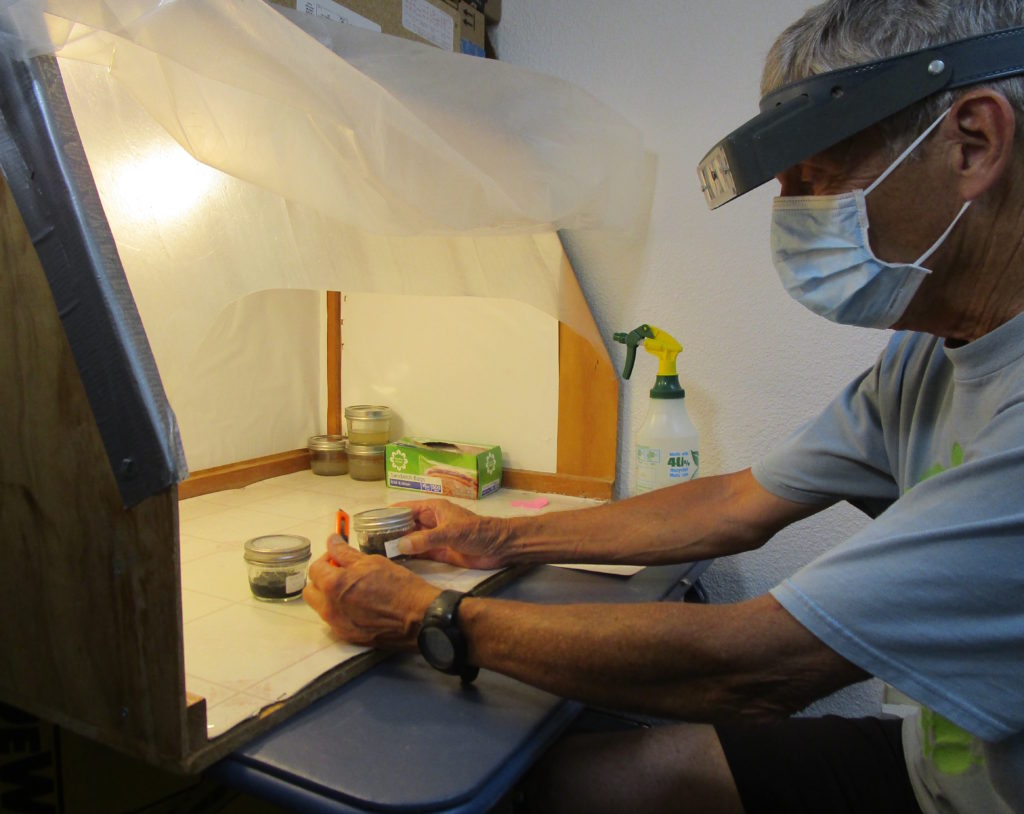
Q: Describe your laboratory and what it took for you to build or put it together.
A: The laboratory is a small room at my house with a sink, a counter top, a growing area and, most importantly, a laminar flow cabinet. This is a small cabinet, lighted inside and open at the front. Air is constantly blown into the top of the cabinet through a big HEPA filter, and exits at the front. This ensures that the air in the cabinet is free of any particles that could carry bacteria or fungal spores. The growing area consists of shelves that are lit by low-hanging shop lights and are on for 16 hours a day. Small Mason jars with transparent lids contain the seeds and small orchid plants. The ideal temperature under the lights is about 70 degrees F.
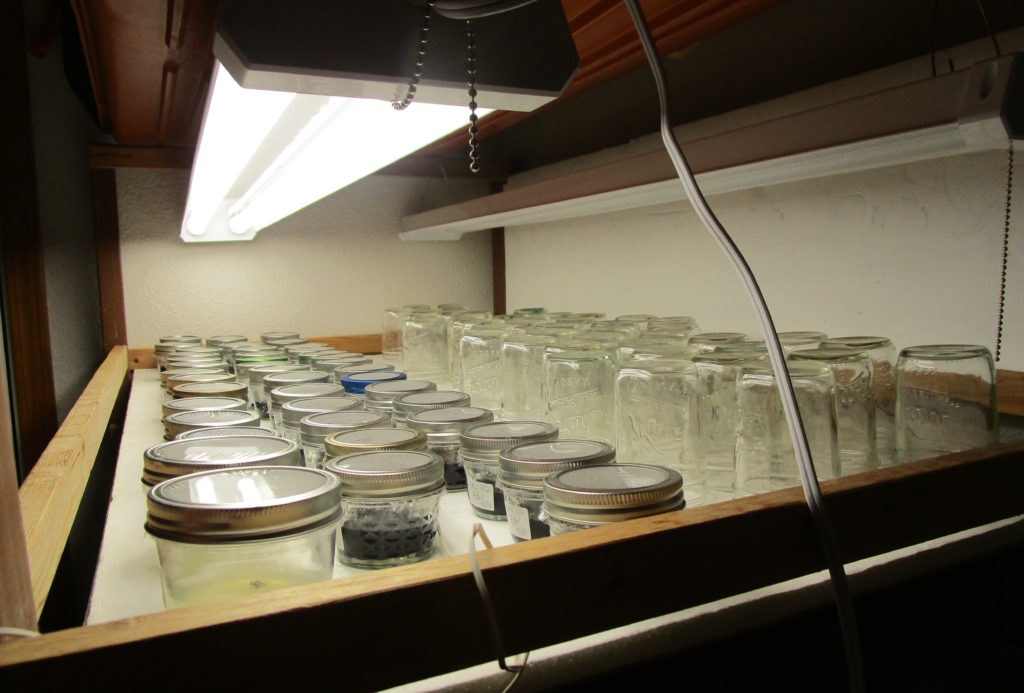
Q: What happens in the lab after you collect the seeds?
A: I generally harvest the seed pods a week or two before they are fully ripe and split open. Working in the clean atmosphere of the laminar flow cabinet, I sterilize the outside of the seed pod in diluted bleach solution. I then cut the pod open with a sterile scalpel and transfer the seed to the growing medium in Mason jar.
The seeds swell up and germinate within a few weeks. After two or three months the small plants may be getting overcrowded in the flasks, and I transfer them into bigger jars that each contain about 10 plants. After these have grown on for another few months, the plants have 2- to 3-inch leaves and are ready to come out of the lab into the big bad world outside. That happens in the springtime, around March.
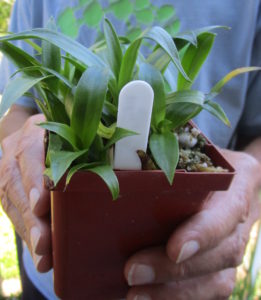
Q: So now you have hundreds of small orchid starts on your back deck. What’s next?
A: Many of the small plants don’t survive the trauma of coming out of the lab. Some runts get discarded. The stronger plantlets get put into small individual pots and get moved to the greenhouse near Florence, where they join the older plants.
Q: You sell and ship seeds and small plants. Who buys them?
A: I have a website that is primarily intended to provide information about the important Disa species, and particularly how to grow Disas in cultivation. The website gets a decent amount of traffic and leads to some requests from people wanting to buy Disas or Disa seed. It is definitely not a business and not intended to be. I try to discourage prospective buyers if I sense that they won’t be able to keep the plants alive, whether through their geographical location (hot, dry climates with hard water) or their inexperience. Disas are not for the fainthearted.
Q: Describe the process for getting the Disa Amanda registered with the Royal Horticultural Society at the Kew Gardens and what that means.
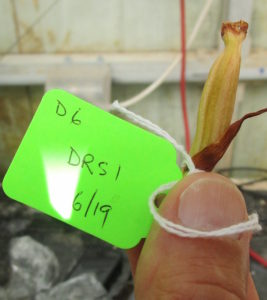
A: The Royal Horticultural Society keeps a list of all registered orchid hybrids. So if someone flowers a new hybrid that looks nice, and the grower is prepared to make a small payment, they can register it with the RHS. This involves filling in a form with details about the parentage of the hybrid, choosing a name, describing the flowers and when they flowered. The form and payment are then sent to their registrar who checks the records to ensure that this is indeed a new hybrid and that the chosen name is a new one. There are already about 450 registered Disa hybrids.
Coincidentally, Disa Amanda has four different Disa species in her pedigree, each contributing one-fourth to her genetic makeup.
Q: You also have access to a greenhouse in Florence. How did that happen, what occurs there, how often do you go down there?
A: Most of my Disas, including all the mature ones, live in a greenhouse close to Woahink Lake south of Florence. Shortly after I moved to Yachats, I desperately needed a home for my Disas, so I approached Jim Rassmann, an orchid judge and owner of the greenhouse. After a lot of experimentation and many failures, I now have an automated watering system for the Disas that seems to work pretty well. This means I can head to Florence about once a week to check on the water levels and tend to the plants. The water needs to be changed every two weeks, an important task.
The biggest job of all is to repot all the plants annually, about 500 or so. That keeps me busy in September and October. Once that is complete, the collection doesn’t need much attention until the plants start growing strongly in the spring.
